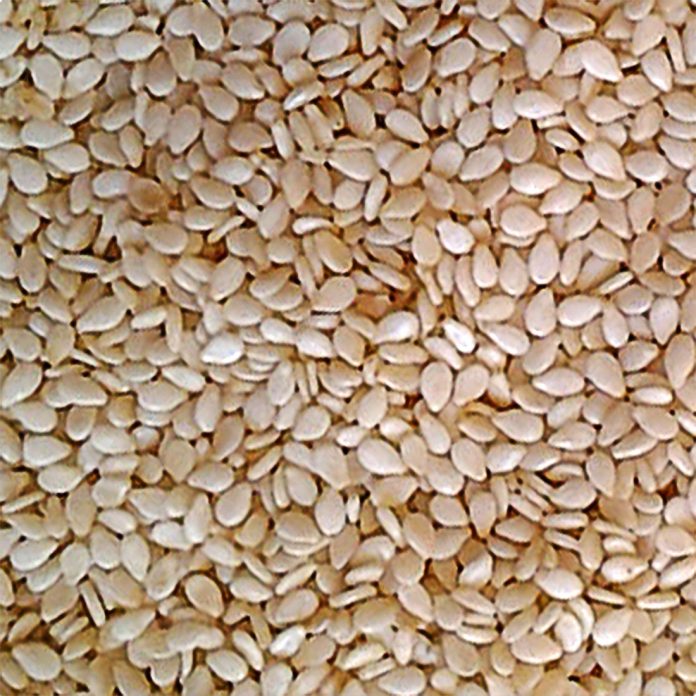Shamiso Ngwena & Cynthia Chitombi
Zimbabwean farmers, struggling with traditional crops such as maize, have shifted focus to the sesame plant targeting at least 100 000 tonnes of the crop during the 2020/2021 agricultural season.
Agricultural production in Zimbabwe has been on a slide since the agrarian reform at the turn of the century while adverse climatic conditions accompanied by erratic rainfall has seen a dramatic drop in yields in the sector.
Zimbabwe’s maize production rose to an estimated 17 percent during the 2019/20 season amid concerns of poor yields, which averaged 0.57 tonnes per hectare.
According to the Second Round Crop and Livestock Assessment Report, the estimated maize production is 907 628t, which is 17 percent more than the 776 635t produced during the 2018/2019 season.
According to the report. sesame production is estimated at 5 037 tonnes, which is a 15 percent decrease compared to 5 958 harvested during the 2018/2019 season.
Production was affected by the early cessation of the rains, the report noted adding that further indicating that the sustained production increase is due to the lucrative market price.
Mashonaland Central with 11 552 hectares dominated production followed by Masvingo and Manicaland provinces while the whole country put 17 860ha under the crop.
In 2018, government called on farmers to grow sesame seeds for export with indications that global imports of the oldest oilseed crop raked in $2,2 billion in 2017.
However, the Sesame plant is climate smart and can produce reasonable yields even in the drier most parts of the country.
Ethiopia is producing 300 000 tonnes in a season while exporting 70 percent to China, earning over US$400 million per year.
Zimbabwean farmers have revealed that the sesame plant called Runinga in Shona, is used to draw cooking oil and peanut butter.
The farmers are also targeting the Mozambican market where the crop currently attracts payment in US dollars.
The crop, according to the farmers, produces at least 40-50 bags per hectare.
“I planted one hectare last season and I look forward to 40 or 50 bags of Runinga and that’s where we will survive,” he said.
Sesame Productivity levels in Ethiopia have soared high despite falling during the 2013/2014 season to 600kg per hectare down from 700 hectares.
Production of the sesame plant was low during the 1999/2001 season with the crop covering below 50 000 ha while productivity dropped to 400kg/ha.
During the 2001 to 2003 period, productivity was with area covered rising 200 000ha and tonnes, respectively, while area utilised rose to almost 400 000ha between 2008 and 2011.
Production also rose significantly to a higher output exceeding 300 000 tonnes.
Sesame production in Ethiopia rose to above 400 000 tonnes in 2013/2014 and although productivity dropped to 600kg/ha it was offset by the area covered that increased to 700 000ha.
While a steep drop in the planting of the sesame crop occurred during the 2014/2015 agricultural season from 700 000ha to 400 000ha with production declined below 300 000 tonnes, a gradual rise was recorded in productivity to more than 700kg/ha.
During the period between 2015 and 2018, Ethiopia earned an estimated US$700 000 through the export of the sesame crop rising from an estimated US$50 000 from 2000 to 2003.
Sesame seed is one of the oldest oilseed crops and is mainly produced in Asia and Africa, which together account for about 95 percent of global production.
Countries where sesame is an integral part of national diet include Egypt, Vietnam, Israel, Turkey and Hong Kong which have also reported increased imports of the product.
Sesame varieties can be dated back 3 000 years ago to the original wild crop which can still be found growing naturally in some parts of Asia and sub-Saharan Africa.
The plants grow to a mature height of up to one metre and harvesting can occur between 100 and 130 days after planting.
Sesame varieties are suitable for a range of soils, but generally prefer fertile and well-drained soil in warmer climates.













what is the production cost plus any other requirements such as fertilizers?